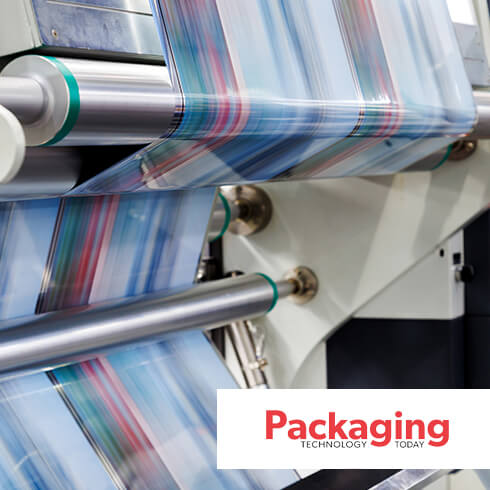Unleash Up to 20% More Improvement and Give Your Business the Edge it Needs Now with Lean 4.0.
It’s no secret that manufacturers continue to struggle with global supply chain disruptions and talent issues exacerbated by recent global events. They face shortages of everything from raw materials to people to get the job done, even as pent-up demand is putting more pressure on production schedules. Like never before, companies must find new ways to do more with less.
Manufacturers that are lean veterans have an advantage. After all, they already have a waste-reduction and efficiency focus and are wired to make the most of every resource they have available. However, many companies feel they have already captured most of the surface-level performance improvement opportunity and are only realizing incremental gains from current lean initiatives. So, they aren’t necessarily thinking about getting more lean as the answer to their current woes.
This is a big oversight. With the evolution of Lean 4.0, now is actually the perfect time to recommit to lean, in a bigger and deeper way, and dig into your as-yet-uncovered performance improvement opportunities as a way to tackle and offset the heightened challenges you’re facing now.
So, what is Lean 4.0 anyway?
In our recent article, Use Lean 4.0 to Tackle Hidden Performance Improvement Opportunity, we take a deep dive into the topic. As a relatively newer buzzword, there’s some debate about what, exactly, it means. But pretty much everyone agrees that Industry 4.0 and connected equipment are central to the idea.
TBM, however, sees the Lean 4.0 opportunity as much bigger than data. Like everything else, we look at it through the lens of solving real business problems—like the talent and supply issues currently keeping you up at night. And while data most certainly plays a role in resolving these challenges, it’s just one pillar of the solution stool. In other words, data can point you in the right direction. But it’s what you do with the data to ultimately resolve problems that really counts.
To that end, the TBM view of Lean 4.0 encompasses three equally important areas:
1. 100% INSTITUTIONALIZING LEAN ACROSS THE ORGANIZATION
Lean is a journey that never really ends. No matter how lean you are, there are always opportunities to do more within pockets of your organization where waste remains—or where it’s creeping back in.
Before you start looking for uncovered or hidden performance improvement opportunity, it’s worth a checkup to see what’s readily available on the surface. Look especially at lean processes that may have become lax during the COVID crisis, such as root cause identification, problem solving, and standard work. A little tune up in these departments can go a long way in making your team much more productive.
2. MARRYING LEAN CULTURE WITH INDUSTRY 4.0
When you’re ready to dig deeper for new performance improvement opportunities, this is where the data comes into play. There is waste hiding in your manufacturing processes, work methods, and equipment parameters, and you need data to show you where it is.
When paired with analytics, Industry 4.0 data that comes from connected machines can lead you to the root cause of the minor stoppages, wasted seconds, and nuanced inefficiencies that can add up to major gains in productivity. Connected workers and connected supply chains help, too, by giving insights into where such things as standard work may need improvement or where supply chain disruptions are going to lead to future problems. As one manufacturing executive told us in our recent Operations Roundtable, “S&OP [processes and data] is helping us see the bad news better than we did before . . . . and at least we see where the train’s going to derail. Especially with the long lead times when you’re looking 12 months out, it gives you the ability to react. It’s the windshield.”
3. ADOPTING ADVANCED TECHNOLOGIES TO UNDERSTAND AND ADDRESS AREAS OF IMPROVEMENT OPPORTUNITY IN BUSINESS PROCESSES
When you know where the culprits lie, you can then determine the best way to solve for the problems. Very often, this involves technology and automation. As another executive at our roundtable quipped, “In our warehouses and manufacturing plants, we’ve come to the realization that in the past, automation was a cost reduction opportunity. But now it’s a revenue generator because we don’t have people to run the lines. So where we can, we’re using robotics and more enhanced technology.”
Replacing non-value-added manual work with technology is one way to address the labor crisis, get leaner, drive efficiencies, and improve quality. But technology can also make the people you do have onboard more efficient. Manufacturers are leveraging digital standard work, workstation robotics, advanced analytics, and AI to drive assembly line teaching and expand skill sets, and it’s enhancing the productivity of the team, tying right into the lean culture and mindset.
AI and machine learning can also be used to optimize supply chains and to help manage complex networks. As one leader shared with us, his company is working with a leading digital fulfillment provider to help leverage AI and machine learning to better manage 50+ plants and warehouses. To keep transportation and warehousing costs low, the organization invested heavily in the provider’s warehouse management and transportation management control modules. “Before we had too much inventory, too much cost, and then everything was affected by COVID. Now we have a better handle on the supply chain across the board. We’re about 90% through implementation, and it’s been very successful.”
Set a Lean 4.0 pace that works for your business.
While we estimate that most manufacturers have 20% more improvement opportunity to gain through a Lean 4.0 approach, we believe that realizing those gains requires a pragmatic, prove and move approach. That starts with identifying challenges that are most critical to the business, such as cost-effectively meeting demand and quality expectations with limited resources. Implement a Lean 4.0 approach here first, and you’ll quickly see how rolling out lean processes, gathering the right data, and strategically leveraging new technology works on a smaller scale to make a big business performance difference. Once you’ve proved the value from your initial steps, you can move on to the next area with confidence.
Stay tuned for future posts in our series to learn more advancing your lean journey. Or dive in now by reading our Lean 4.0 article for more details on the four phases of our recommend pragmatic approach.




